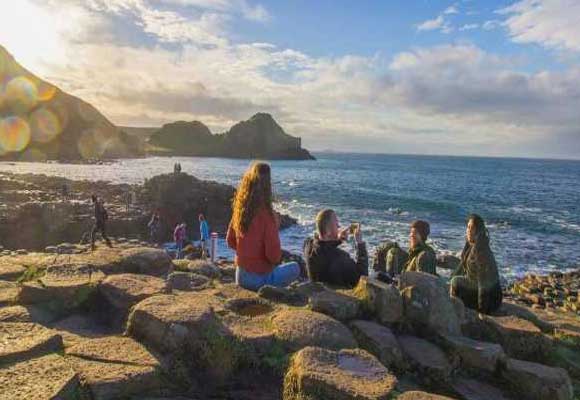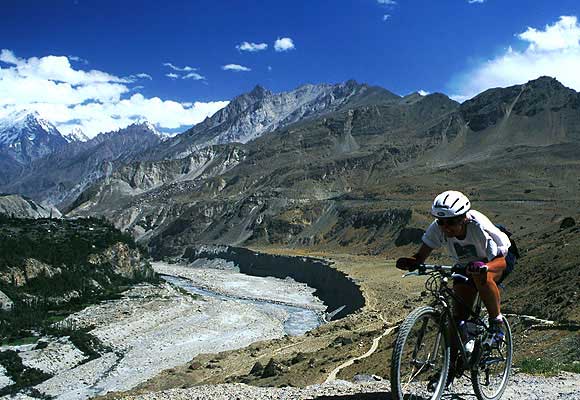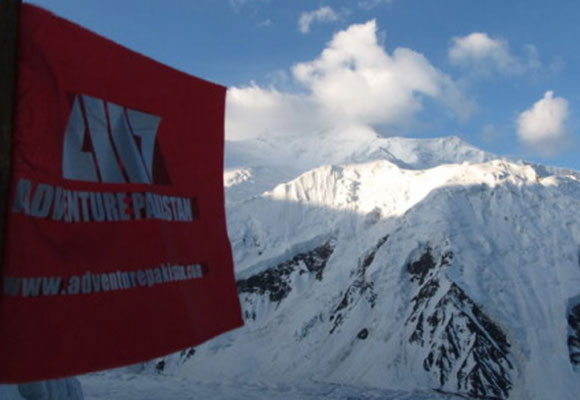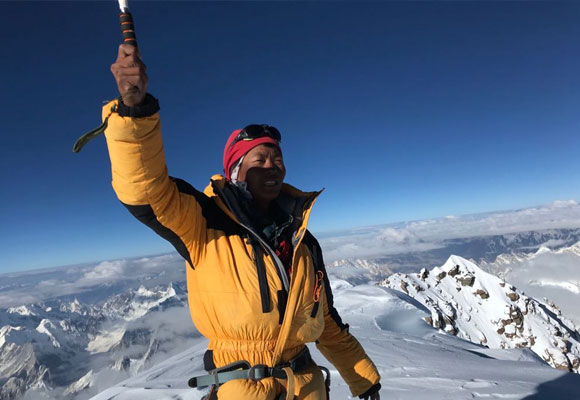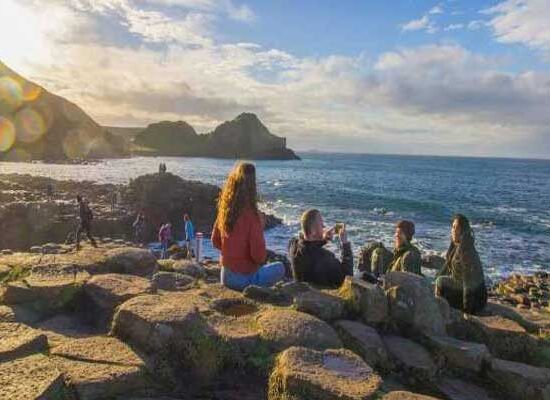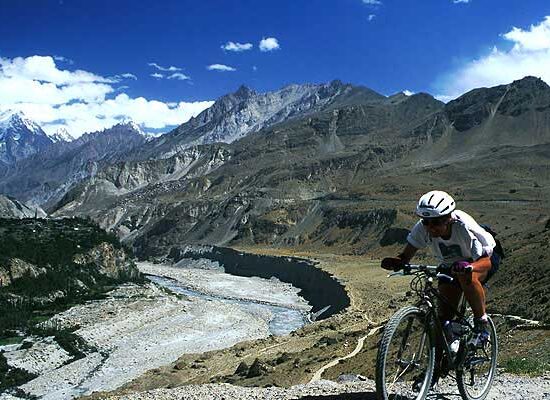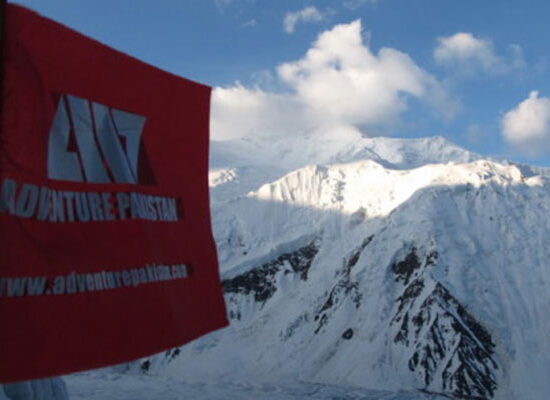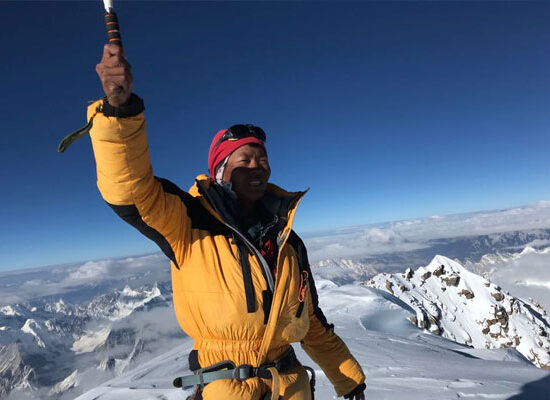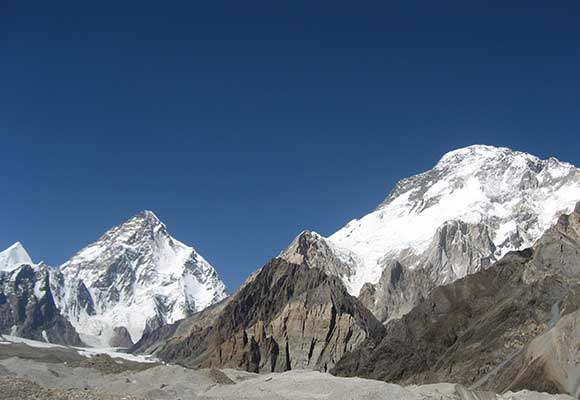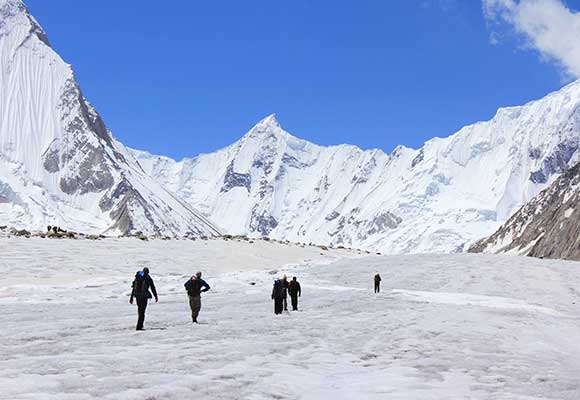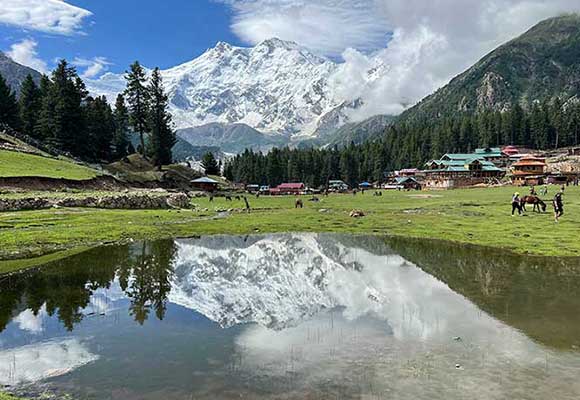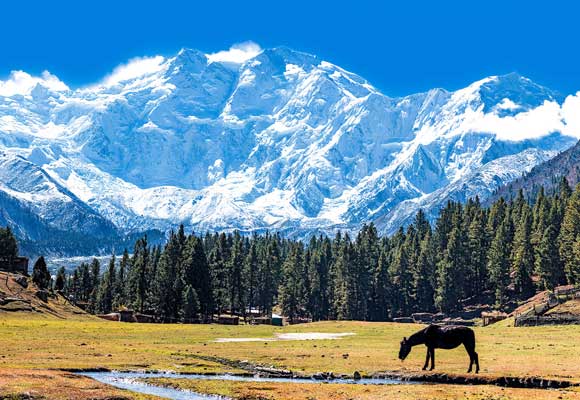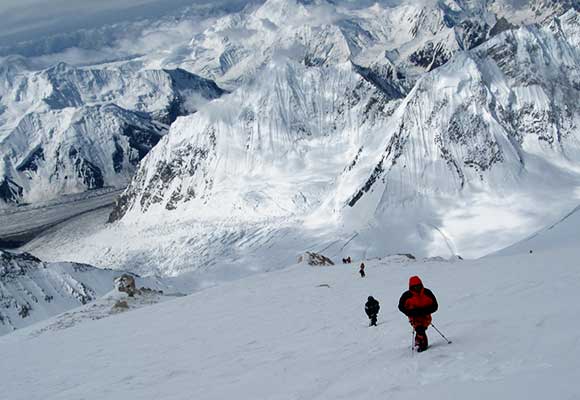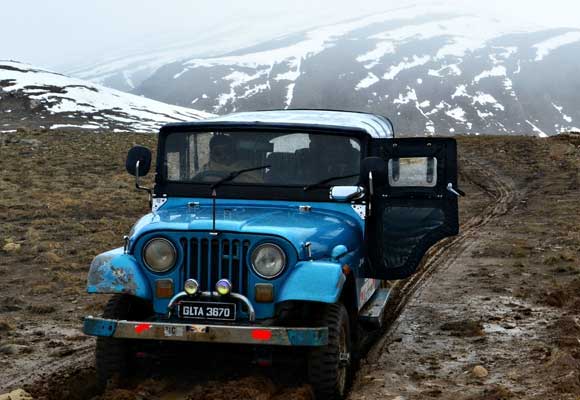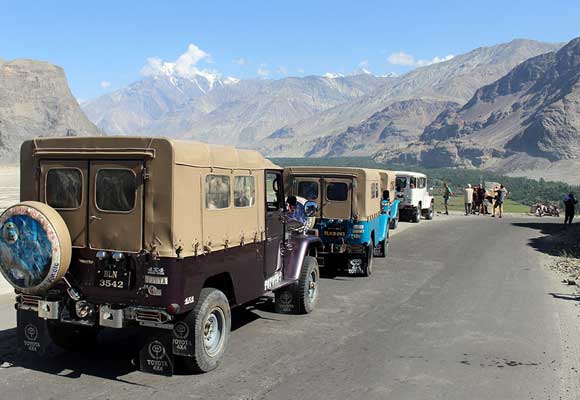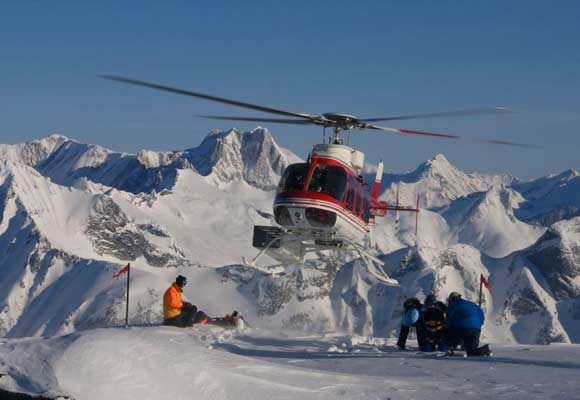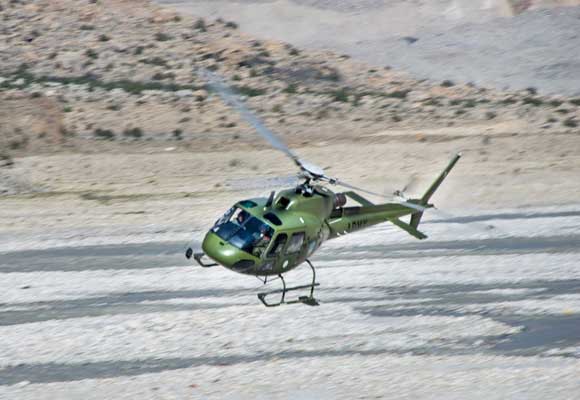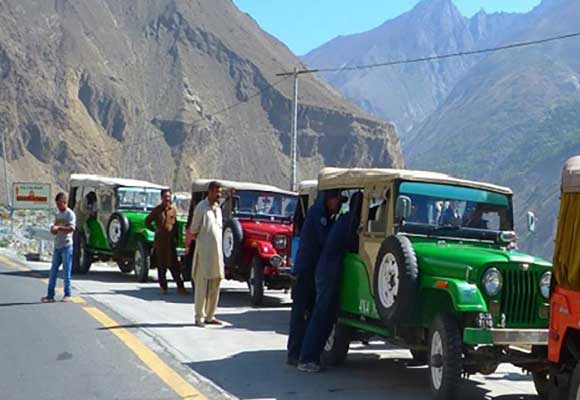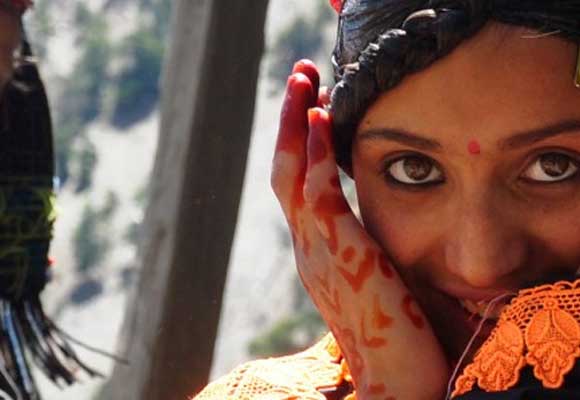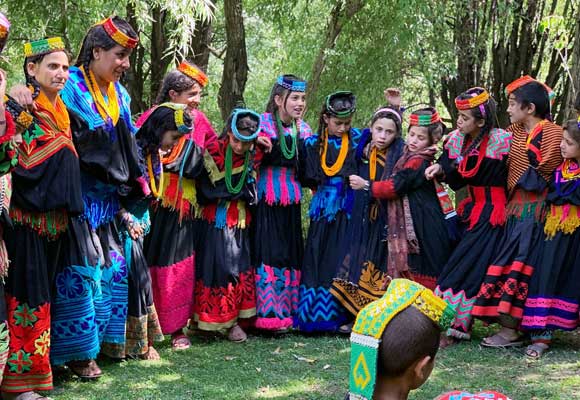Day Trips & City Sightseeing
Tour Category
Group Size
Duration
From
OVERVIEW & ITINERARY
dETAILS
Rohtas Fort
Rohtas Fort is 109 km from Rawalpindi. It is located about 6 km south-west of Dina Town. Going from Rawalpindi/Islamabad, you have to turn right from G.T. Road after Dina on a newly limit ludge. The fort is visible from this point. The fort is one of the most impressive historical monuments in Pakistan. It was built by Afghan ruler Sher Shah Suri, between 1540 and 1547 AD. It served as a huge fortified base for military operations against Gakkhars by Sher Shah Suri. It was later used by Mughal emperor Akbar and Sikhs. Within the huge terraced rampart walls with robust bastions and twelve gates, is located another fortress, palaces and ancillary buildings.
Rawat Fort
Rawat Fort is located 17 km east of Rawalpindi, on the Grand Trunk (G.T) Road leading to Lahore. Gakkhars, a fiercely independent tribe of the Potohar Plateau built the fort, in early 16th century. The grave of a Gakkhar Chief, Sultan Sarang Khan is located inside the fort. He died in 1546 AD fighting against the forces of Sher Shah Suri. If one dares to climb the broken steps inside the tomb, one may get a panoramic view of the plateau and the Mankiala Stupa.
The Salt Range
The Salt Range runs from Jhelum city on the G.T. Road and west to Mianwali and Kalabagh along the Indus River. There are many places of historical and archaeological interest in the Salt Range. Salt Range seems to have formed part of a powerful Hindu Kingdom of Kashmir in 10th century AD. Most of the forts and temples concentrated in and around the Salt Range date from that period. Mahmud of Ghazni, in the early eleventh century and Mughal Emperor Babur in the 16th century visited the area after their invasion of the sub-continent. The Janjua tribe, the most important in the central parts of the Range, were then converted to Islam.
Kallar Kahar Lake and Ketas Temples
The main attraction of the eastern Salt Range are the shrine of Saidan Shah at Choa Saidan Shah, the lake and the Hindu Temple Complex at Katas. Kallar Kahar is located about 135 km from Rawalpindi. The TDCP has built a six-room motel and restaurant overlooking Kallar Kahar with boating facilities. The Temple of Shiva at Katas (10th century AD) and other temples around Katas are valuable pieces of architecture and history and one reverend as a very Holy place for Hindus.
Khewra Salt Mines (Largest Salt deposit in the world)
The main centre of mining is Khewra in the Salt Range where the world’s largest salt mines are located. Khewra salt mines are 154 kms away from Rawalpindi. The route is Mandra-Dudyal-Chakwal-Bhaun-Choa Saidan Shah-Khewra. A longer route is through Kallar Kahar-Katas. The nearest hotel accommodation is at TDCP resort Kallar Kahar. For permit to visit the mines and to book the accommodation at the PMDC Rest House at Khewra, you may contact their office in Islamabad at Plot No.13, H-9 (Manager Salt Tel: 2250928-30) through PTDC Tourist Information Centres in Rawalpindi or Islamabad, at least 4 days in advance.
MARGALLA PASS
This small pass is located 26 km west of Islamabad on G.T. Road. There is an obelisk right on top of the pass, which was built in 1890 in memory of Brig. Gen. John Nicholson (died on 23rd Sept.1857) of the British army, by his colleagues. A small part of the ancient Shahi (Royal) Road can be seen just across the pass, left of G.T.Road. This road was first built by the Persians in 516 BC and is believed to have been further developed by the Afghan King Sher Shah Suri in 1540s.
TAXILA
The modern town of Taxila is 35 km from Islamabad. Most of the archaeological sites of Taxila (600 BC to 500 AD) are located around the Taxila Museum. For over 1000 years, Taxila remained famous as a center of learning for the Gandhara art of sculpture, architecture, education and Buddhism in the days of the Buddhist glory. There are over 50 archaeological sites in the radius of 30 km around Taxila. Some of the most important sites are: Dhamarajika Stupa and Monastery (300 BC – 200 AD), Bhir Mound (600 – 200 BC), Sirkap (200 BC – 600 AD), Jandial Temple (250 BC) and Jaulian Monastery (200 – 600 AD). A museum comprising various sections with rich archaeological finds of Taxila, arranged in chronological order and properly labeled, has been established close to the site. It is one of the best and well-maintained site museums of Pakistan.
WAH GARDENS
Once a major campsite of Mughal rulers, Wah Gardens is located 12 km west of Taxila on G. T. Road. The gardens were developed with magnificent trees and water channels by successive Mughal emperors. Tapering cypress trees, loved by the mughals, line the canals through which cool waters once flowed between elegant Romanic pavilions and cascaded into large reflecting basins.
HASAN ABDAL
Hasan Abdal is located 48 km from Rawalpindi. This town remained a holy place for various religious groups through the ages. It has a Sikh Gurdwara (temple) known as Panja Shaib, having a sacred rock with the handprint of the Sikh religious leader, Guru Nanak. Just opposite the eastern gate of Gurdwara Panja Sahib, there is a small mosque and chilla gah (meditation cell) of Baba Wali, a 15th century Muslim saint. Behind the mosque is a fresh-water pond with big Mahasheer fish. Adjacent to the pond is a building called Maqbara Hakeeman. Two royal Hakeem (doctor) brothers, Abdul Fateh Gilani (died 1589 AD) and Hamam Gilani (died 1595 AD) are buried here on the orders of the Mughal emperor Akbar. Khawaja Shamsuddin Khawafi, Akbar’s minister, 1581-1583 AD, built both the fish pond and the tomb. A paved path leads from the fishpond to a small, walled garden. The garden has two graves. The center grave is attributed to a so-called Mughal princess, Lala Rukh.
MOHENJODARO
The archaeological site of Mohenjodaro was excavated for the first time in 1922; with it is associated the name of renowned British scholar- archaeologists like Sir John Marshal and Sir Mortimer Wheeler. The site of this excavation dates back to civilizations that flourished 4,500 years ago. Mohenjodaro was one of the most important centers of the remarkable Indus Valley civilization. The museum, located close to the site of the excavations, houses interesting relics of antiquity such as engraved sculptures, pottery, etc.
SUKKUR
This is the most important town in upper Sindh. More than 2,000 years ago, the town was at Aror, 9 km east of the present site. It was relocated in 962 A.D owing to an earthquake; the Indus diverted its course to its present channel. By the 13th century the twin cities of Sukkur and Rohri, were bustling rivers ports that reached their zenith in the 17th century.
ZIARAT
A visit to Quetta is incomplete without a trip to Ziarat. Situated 133km (3 hours) from Quetta at an altitude of 2449 m above sea level, Ziarat is a holiday resort amidst one of the largest and oldest Juniper forests in the world. It is said that some of the Juniper trees are as old as 5000 years. The name Ziarat means “shrine”. A local saint, Khanwari Baba, is believed to have rested in the valley and blessed it, he was buried there too. People frequently visit the shrine, which is 10 km from Ziarat.
BOLAN PASS
This pass links Quetta with the plains of Punjab and the upper Sindh, by road and railway, the train passes through 21 tunnels to cross the Bolan Pass.
SIBI
Sibi is located at a distance of 163 km from Quetta. The town has a great historical importance; it has witnessed the names of conquerors and kings like Alexander. Mehmood Ghaznavi, and Nasir-ud-din Kabacha. The British built a residency and Victoria Memorial Hall here, now known as Jirga Hall. This hall is converted into a museum having archaeological pieces found at Mehrgarh.
MEHRGARH
Neolithic Mehrgarh is a 9000 years old site of human settlement in Katchi district at the foot of Bolan Pass near Sibi. The discoveries at Mehrgarh have pushed back the chronology of civilization in Pakistan, by over 4000 years.
BAHAWALPUR
The founder of the state of Bahawalpur was Nawab Bahawal Khan Abbasi I. The Abbasi family ruled over the state for more than 200 years (1748 to 1954). During the rule of the last Nawab Sir Sadiq Muhammad Khan Abbasi V, Bahawalpur State was merged with Pakistan in 1954. Bahawalpur was formerly the capital of the state and now is the district and Divisional Headquarters of the Bahawalpur division. It is an important marketing center for the surrounding areas and is located on the crossroads between Peshawar, Lahore, Quetta and Karachi. Saraiki is the local language of the area. Urdu, Punjabi and English are also spoken and understood by most of the people.
LAHORE
Legend has it that Lahore was founded by son of Lord Rama about 4,000 years ago. Historically, it has been proved that Lahore is about 2,000 years old. Hieun-tasng, the famous Chinese pilgrim has given a vivid description of Lahore city which he visited in the early parts of the seventh century A.D.
For 200 years, beginning from about 1525 A.D., Lahore was a thriving cultural centre of the great Mughal Empire. Mughal Emperors beautified Lahore, with palaces, gardens and mosques. During the British regime many monuments sprang up in Lahore which blended beautifully with the Mughal, Gothic and Victorian styles of architecture.
Lahore is the second largest city in Pakistan and the provincial capital of Punjab. Apart from being the cultural and academic centre of the country, Lahore is the Mughal “Show-Window” of Pakistan. The origins of Lahore are shrouded in the mists of antiquity. Reminiscence of its hoary past are the remains of a subterranean temple in the northern part of the Royal Fort, attributed to Rama, the legendary hero of Ramayana. Lying on the main trade and invasion routes to the South Asia, Lahore has been ruled and plundered by a number of dynasties and herdes. However, it touched the zenith of its glory during the rule of the Mughals. The Mughals, who were famous as builders, gave Lahore some of its finest architectural monuments that are extinct today.
ALLAMA IQBAL’S TOMB
Outside the Badshahi Mosque, near its steps, lies the tomb of Allama Iqbal, the poet- philosopher of the East. The mausoleum is a mixture of Afghan and Moonsh styles of architecture and is constructed entirely of red sandstone.
MAUSOLEUM OF EMPEROR JEHANGIR
The tomb of the fourth great Mughal Emperor, Jehangir, lies 5 km north-west of Lahore across the River Ravi. It has a majestic structure made of red sand-stone and marble. The outer entrance to the tomb opens out into a court-yard which was used as a caravan Serai during Mughal times. An entrance to the right leads into a Mughal garden with exact geometrical patterns balancing each side. The marble tomb is approached from four corridors leading from the garden. Three of these corridors are closed by intricate marble screens. The marble grave is elaborately inlaid with floral designs and the 99 Attributes of Allah are inscribed on its two sides. On the top is a verse from the Holy Quran. The tomb was built by Queen Noor Jehan and the Emperor’s son Shah-Jehan, around 1637 A.D.
NOOR JEHAN’S TOMB
The Empress Noor Jehan, “Light of the world” was the only Empress whose name appeared on the coins of the Mughal empire. She was buried in 1645 A.D. at Shahdara (Lahore) outside Jehangir’s mausoleum across the railway line.
Her tomb once had a marble cenotaph which she had built herself during her life time. After the decline of Mughal rule, the tomb suffered extensive damages along with her husband’s tomb at the hands of Sikh marauders when they gained power during the early part of nineteenth century. Both were stripped of most of its original beauty and splendour. All treasures and tiles, it is said, were carted off to decorate the Golden Temple at Amritsar India.
ANARKALI’S TOMB
The tomb of Nadira Begum, alias Anarkali, is situated in a corner of the Civil Secretariat of Punjab Government at Lahore.
The tomb is circular in shape and rooted with a vast and lofty dome supported from inside by eight massive arches 12 feet 3 inches thick. It is a masterpiece of solid masonry work of early Mughal period and is neatly and beautifully fitted up.
ITINERARY
Lorem ipsum dolor sit amet, utinam munere antiopam vel ad. Qui eros iusto te. Nec ad feugiat honestatis. Quo illum detraxit an. Ius eius quodsi molestiae at, nostrum definitiones his cu. Discere referrentur mea id, an pri novum possim deterruisset.
Lorem ipsum dolor sit amet, utinam munere antiopam vel ad. Qui eros iusto te. Nec ad feugiat honestatis. Quo illum detraxit an. Ius eius quodsi molestiae at, nostrum definitiones his cu. Discere referrentur mea id, an pri novum possim deterruisset.
Lorem ipsum dolor sit amet, utinam munere antiopam vel ad. Qui eros iusto te. Nec ad feugiat honestatis. Quo illum detraxit an. Ius eius quodsi molestiae at, nostrum definitiones his cu. Discere referrentur mea id, an pri novum possim deterruisset.
WHAT'S INCLUDED
- Pick and Drop Services
- 1 Meal Per Day
- Cruise Dinner & Music Event
- Visit 7 Best Places in the City With Group
WHAT'S NOT INCLUDED
- Additional Services
- Insurance
- Food & Drinks
- Tickets
ROUTE MAP
Find a route from your location
gallery
Frequently asked questions
Do I need a visa for this trip?
For all trips to Pakistan you will require a visa, depending on the the type of tour you will either need a standard tourist visa or a trekking visa. Our sales team will provide you with all the necessary information as well as a visa invitation letter and related supporting documents after you have booked your tour with us.
How much price about tour & travels
Lorem ipsum dolor sit amet, utinam munere antiopam vel ad. Qui eros iusto te. Nec ad feugiat honestatis. Quo illum detraxit an. Ius eius quodsi molestiae at, nostrum definitiones his cu. Discere referrentur mea id, an pri novum possim deterruisset. Eum oratio reprehendunt cu. Nec te quem assum postea.
Who will meet me on arrival?
An Adventure Pakistan representative will meet you at the airport and will bring you to your hotel.
Do I need a visa for this trip?
For all trips to Pakistan you will require a visa, depending on the the type of tour you will either need a standard tourist visa or a trekking visa. Our sales team will provide you with all the necessary information as well as a visa invitation letter and related supporting documents after you have booked your tour with us.
How much price about tour & travels
Lorem ipsum dolor sit amet, utinam munere antiopam vel ad. Qui eros iusto te. Nec ad feugiat honestatis. Quo illum detraxit an. Ius eius quodsi molestiae at, nostrum definitiones his cu. Discere referrentur mea id, an pri novum possim deterruisset. Eum oratio reprehendunt cu. Nec te quem assum postea.
Who will meet me on arrival?
An Adventure Pakistan representative will meet you at the airport and will bring you to your hotel.
REPORTS & REVIEWS
Region
Period
Level
Comfort
Frequently asked questions
Do I need a visa for this trip?
For all trips to Pakistan you will require a visa, depending on the the type of tour you will either need a standard tourist visa or a trekking visa. Our sales team will provide you with all the necessary information as well as a visa invitation letter and related supporting documents after you have booked your tour with us.
How much price about tour & travels
Lorem ipsum dolor sit amet, utinam munere antiopam vel ad. Qui eros iusto te. Nec ad feugiat honestatis. Quo illum detraxit an. Ius eius quodsi molestiae at, nostrum definitiones his cu. Discere referrentur mea id, an pri novum possim deterruisset. Eum oratio reprehendunt cu. Nec te quem assum postea.
Who will meet me on arrival?
An Adventure Pakistan representative will meet you at the airport and will bring you to your hotel.
SIMILAR Tours
- Quality4.75
- Location4.75
- Amenities4.25
- Services5
- Price4.25
- Quality4.75
- Location4.75
- Amenities4.25
- Services5
- Price4.25
- Quality4.75
- Location4.75
- Amenities4.25
- Services5
- Price4.25
- Quality4.67
- Location4.67
- Amenities4
- Services5
- Price4
- Quality4.67
- Location4.67
- Amenities4
- Services5
- Price4
- Quality4.67
- Location4.67
- Amenities4
- Services5
- Price4
- Quality4.67
- Location4.67
- Amenities4
- Services5
- Price4
- Quality4.67
- Location4.67
- Amenities4
- Services5
- Price4
- Quality4.67
- Location4.67
- Amenities4
- Services5
- Price4
- Quality4.67
- Location4.67
- Amenities4
- Services5
- Price4
- Quality4.67
- Location4.67
- Amenities4
- Services5
- Price4
- Quality4.67
- Location4.67
- Amenities4
- Services5
- Price4

